![]()
| AP Human Geography Syllabus 2015-2016 |
This year long class will introduce students to the systematic study of patterns and processes that have shaped human understanding, use, and alterations of the Earth’s surface. By looking at the relationships between cultural groups and their physical geography it is possible to find relationships that allow geographers to understand better how humans are shaped by their physical world, and change it in turn. We will be looking at different cultural phenomenon such as language, religion, government, and economic systems in order to make connections between different cultural set and how they interact with one another. By examining maps and other geographical tools students will examine correlations between the physical and human world and the interactions that have shaped our planet and human life. This course is designed to increase the students’ understanding of the world and develop their critical thinking skills. Upon completion of this course students will be given the opportunity to take the Advanced Placement test for the possibility of college credit.
Note to Teachers* I am not presently teaching this course, so some modules may not be up to date - please do not hesitate to contact me with what you are looking for and I most likely have something that might help you out! - Kyle ([email protected])
Also check out the resources I have on my other website - Geography for Geographers !
Be sure to also check out my Geography 1020 - Introduction to Human Geography course page for more materials that could be adapted for High School students

Module 1.1 : Course Introduction
- Student Introductions
- Welcome to AP Human Geography
+ Carl Sagan - Pale Blue Dot
- Course Expectations
Activity: Where in the World?
HW: World Regions quiz next class
+ Use World Regions Study Guide
Module 1.2 : Five Themes of Geography
- The Five Themes of Geography (Notes)
+ Five Themes Diagram (Notes)
- Geography is Everywhere (Assignment)
HW : Finding the Five Themes (Assignment)
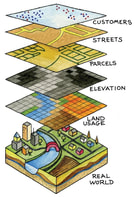
Module 1.3 : Cartography
- Basics of Cartography (Notes)
+ 1965 Vietnam, Cambodia, Laos, and Eastern Thailand Map
- Using TODALSIGS (Assignment)
HW: Rubenstein 14-15, 20-25
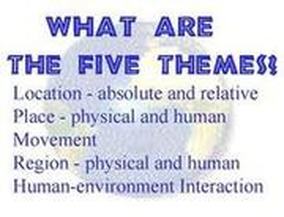
Module 1.5 : Geographic Information Systems
- Dan Scollon Ted Talk (Assignment)
+ Dan Scollon: Geographic Information Systems
- Basics of ArcGIS
+ Hiking Utah County GIS Example
+ Mapping your World (Assignment)
+ Present maps
HW : Unit I Test Next Class
+ Unit I Study Guide: Geography: Its Nature and Perspectives
Module 1.6 : Celebration of Knowledge
- Unit I Test - Nature and Perspectives of Geography
September 25th
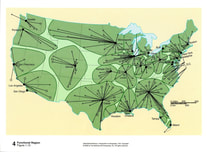
![]()
| Dan Scollon TED Talk |
![]()
| Dealing with A Spherical Earth |
![]()
| Finding the Five Themes |
![]()
| Mapping your World |
![]()
| Mapping Your World csv |
![]()
| Geography is Everywhere |
![]()
| Using TODALSIGS |
Module 2.1 : Introduction to Population
- Population Videos
+ National Geographic: 7 Billion
+ National Geographic: Are you Typical
+ National Geographic: Food for Thought
+ The Miniature Earth
- The World If There Were Only 100 People
- Blue Marble
- Basic Population Vocabulary (Notes)
HW : Population 7 Billion (Activity)
HW: Bring a computer next class
Module 2.2 : Population Trackers
- Census Importance Discussion
+ Using the Census" (Activity)
- Introduction to population tracking websites
+ CIA World Factbook
+ American Fact Finder
HW : Using Factbook and FactFinder (Assignment)
Module 2.7 : Introduction to Human Migration
- Rubenstein Chapter 2 Vocabulary Quiz
- Basics of Migration (Notes)
- Push and Pull Factors Of Migration (Activity)
HW : Rubenstein 92-97
Module 2.8 : Models of Human Migration
- Ravenstein's Theory of Human Migration (Notes)
HW : Rubenstein 102-107
Module 2.3 : Human Population Growth
- The Demographic Transition Model (Notes)
+ The Demographic Transition Model - Graph (Notes)
+ The Demographic Transition Model - Population Pyramids (Notes)
- Reading A Population Pyramid - Russia (Activity)
+ Population Pyramids: Predictors of the Future
+ Reading a Population Map: China (Notes)
HW : Sweden Demographic Transition (Activity)
HW : Rubenstein 54-59
Module 2.4 : Demographics
- Demography: The Geography of Race, Ethnicity, and Gender (Notes)
- Using Demographic Maps
+ 2010 USA Population Density Map
+ The New York Times: Mapping America
+ The Cooper Center: Dot Map
HW: Using Racial Dot Maps (Activity)
HW : Optional Map Quiz Thursday: South America
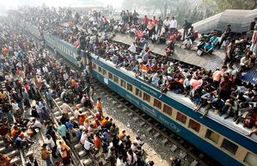
Module 2.9 : Case Study of Human Migration
- Case Studies of Human Migration (Assignment)
+ Calling Australia Home
+ Germans in America: Into the Promised Land
+ Letters from Karelia
HW : Case Studies of Human Migration (The New Commonwealth Migrants) (Assignment)
Module 2.10 : Trends of Human Migration
- Trends in Human Migration to the United States (Notes)
- Refugees in 2010 (Assignment)
+ Use 2010 US State Department statistics of Refugees to answer questions
HW : Unit II Test on Monday
Module 2.5 :Population Growth Theory
- Population Theories (Notes)
- Religions and Babies (Ted Talk)
+ Hans Rosling: Religions and Babies (Activity)
HW : Population Policies: India and China (Activity)
H W : Rubenstein 68-75
HW : Crash Course: Population, Sustainability, and Malthus
Module 2.6 : The Habitable World
- Patterns of Human Settlement
+ Analyzing population density maps (Activity)
- The Habitable World (Notes)
+ World Mapper - Population Cartogram
HW : Rubenstein 70-73
HW : Rubenstein Chapter 2 Vocabulary Quiz

![]()
| Basic Population Vocabulary |
![]()
| Basics of Migration |
![]()
| Demography: The Geography of Race Ethnicity and Gender |
![]()
| The Demographic Transitions Model |
![]()
| The Demographic Transitions Model - Graph |
![]()
| The Demographic Transition Model - Population Pyramids |
![]()
| The Habitable World |
![]()
| Population Theories |
![]()
| Ravensteins Laws of Human Migration |
![]()
| Reading a Population Pyramid: China |
![]()
| Trends in Human Migration to The United States |
![]()
| Unit II Study Guide - Population and Migration |
![]()
| Rubenstein Chapter 2 Vocabulary |
![]()
| Analyzing Population Density Maps |
![]()
| Case Studies of Human Migration |
![]()
| Hans Rosling: Religions and Babies |
![]()
| Population 7 Billion |
![]()
| Population Policies - India and China |
![]()
| Push and Pull Factors of Migration (Handout) |
![]()
| Push and Pull Factors of Migration (Instructions) |
![]()
| Reading a Population Pyramid - Russia |
![]()
| Refugees in 2010 |
![]()
| Sweden Demographic Transition |
![]()
| Using Factbook and Factfinder |
![]()
| Using Racial Dot Maps |
![]()
| Using the Census |
Module 3.1: Basics of Urbanization
- Basic Developments of Cities (Notes)
+ Unicef: An Urban World
+ What If the Entire World Lived in 1 City?
- Chapter 13 Vocabulary (Test Prep)
HW : Chpt 13 Vocab Quiz Next class
Module 3.2 : Urbanization and Migration
- Primate Cities and the Rank-Size Rule (Notes)
HW : Rubenstein 438-441
HW : The World Urban Hierarchy Reading and Questions (Assignment)
Module 3.7: Modern Cities
- Gentrification Effects (Assignment)
- Growth Problems of Urban Development (Notes)
HW : Rasmus Frisk: Designing Cities for People (Assignment)
Module 3.8 : Urban Case Studies
- Urbanized (Assignment)
- CBS: From Amazon to Garden State
- Human Planet - Cities (Assignment)
Module 3.3: Central Place Theory
- Introducing Central Place Theory (Assignment)
- Central Place Theory (Notes)
- Business Distribution in Memphis, Tenn (Assignment)
HW: Finish Business Distribution in Memphis, Tenn
Module 3.4 : Growing Cities
- Urban Growth Models (Notes)
- Saint Paul Urban Growth (Assignment)
+ St Paul Average Income
HW : Finish Saint Paul Urban Growth
HW : Rubenstein 396-40 t.
Module 3.10 : Celebration of Knowledge
- Unit III Test - Cities and Urban Land Use
November 25th, 2014

Module 3.5 : Roles of Cities
- Urbanization of Services (Notes)
- Service Threshold: Loretto, Tn (Assignment)
HW : Chapter 12 Vocabulary Quiz
Module 3.6: Comparing World Cities
- Chapter 12 Vocabulary Quiz
- Regional Urban Models (Notes)
- Looking at Urbanization Around the World (Notes)
HW : Rubenstein 441-447
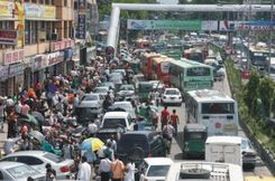
![]()
| Basic Developments of Cities |
![]()
| Central Place Theory |
![]()
| Growth Problems of Urban Development |
![]()
| Looking at Urbanization Around the World |
![]()
| Primate Cities and the Rank-Size Rule |
![]()
| Regional Urban Models |
![]()
| Urban Development Models |
![]()
| Urbanization of Services |
![]()
| Chapter 12 Vocabulary |
![]()
| Chapter 13 Vocabulary |
![]()
| Unit III Study Guide - Cities and Urban Land Use |
![]()
| Business Distribution in Memphis, Tenn |
![]()
| Gentrification Effects |
![]()
| Human Planet - Cities |
![]()
| Introducing Central Place Theory |
![]()
| Rasmus Frisk: Designing Cities for People |
![]()
| Saint Paul Urban Growth |
![]()
| Service Threshold: Loretto, Tn |
![]()
| The World Urban Hierarchy (Questions) |
![]()
| Urbanized |
![]()
| The World Urban Hierarchy (Readings) |


![]()
| World Political Map Quiz Review |
![]()
| US Political Map Quiz Review |

Module 4.1 : History of Agriculture
- Introduction to Agriculture (Notes)
- Guns, Germs, and Steel - Episode 1
+ Guns, Germs, and Steel (Assignment)
HW : The Worst Mistake in History (Assignment)
Module 4.2: Green Revolution and Biotechnology
- Discuss "The Worst Mistake in History"
- Developments of Agriculture (Notes)
HW : Produce Field Study (Assignments)
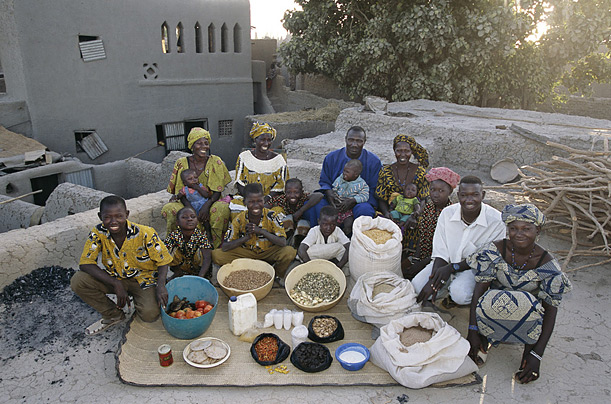
Module 4.1: Fresh Water Resources
- Desertification (Assignment)
- Case Study: Aral Sea (Notes)
HW : Shrinking White Bear Lake (Assignment)
Extra : Blue Gold: World Water Wars
Module 4.3: Modern Agricultural Issues
- Von Thunen's Model of Land Use (Notes)
+ Von Thunen Model (Notes)
- Modeling Minnesota Agriculture (Assignment)
HW : Rubenstein 350-351
HW : Bring textbook next class
Module 4.4: Location of Agriculture
- Subsistence Agriculture (Notes)
- Climate and Commercial Agriculture (Assignment)
HW : Rubenstein 330-335
Module 4.5: Geography of Food Production
- Top Agricultural Producers and Exporters (Assignment)
- Agricultural Regions of the United States (Assignment)
HW : Rubenstein 335-350
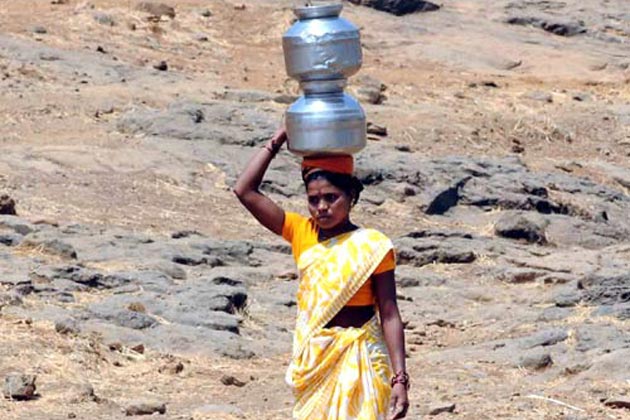
Module 4.6: Agriculture and Development
- Agriculture in MDCs (Notes)
- Rural Organizational Patterns (Notes)
+ Rural Land Systems Reference (Notes)
HW : Rubenstein 403-410
Module 4.7: Hungry Planet
- Hungry Planet (Activity)
+ Hungry Planet (Handout) (Notes and Assignment)
+ Peter Menzel - Hungry Planet
HW : Peter Menzel Ted Talk (Assignment)
HW : Third World Farmer (Assignment)
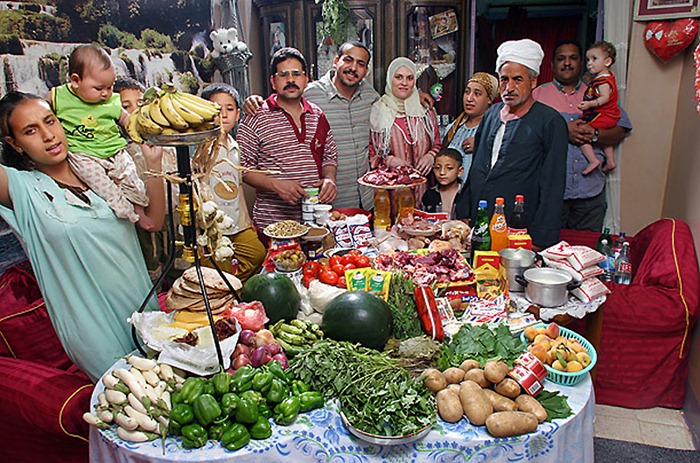
Module 4.10: Celebration of Knowledge
Unit IV Test - Agriculture and Rural Land Use
January 21st, 2016
![]()
| Agriculture in MDCs |
![]()
| Case Study - Aral Sea |
![]()
| Developments of Agriculture |
![]()
| Hungry Planet |
![]()
| Introduction to Agriculture |
![]()
| Natural Resources |
![]()
| Rural Land Systems Reference |
![]()
| Rural Organizational Patterns |
![]()
| Subsistence Agriculture |
![]()
| Von Thunen Model |
![]()
| Von Thunen’s Model of Land Use |
![]()
| Unit IV Study Guide - Agriculture and Rural Land Use |
![]()
| Agricultural Regions of the United States |
![]()
| Climate and Commercial Agriculture |
![]()
| Desertification |
![]()
| Guns, Germs, and Steel |
![]()
| Hungry Planet (Handout) |
![]()
| Modeling Minnesota Agriculture |
![]()
| Peter Menzel Ted Talk |
![]()
| Produce Field Study |
![]()
| Shrinking White Bear Lake |
![]()
| The Worst Mistake in History |
![]()
| Third World Farmer |
![]()
| Top Agricultural Producers and Exporters |
Week 19: Introduction to Industrialization (Semester 2 Begins)
(Jan 25-29)
Thursday: Introduction to Industrialization
- Preview of Semester Two
+ General Timeline and Expectations
- Go over Tests
- Introduction to Industrialism (Notes)
HW : Rubenstein Chapter 11 Vocabulary Quiz Monday (Test Preparation)
HW: Rubenstein 364-366
Friday: No Class "A" Day
Week 20: Geography of Industry
(Feb 1-5)
Monday: Growth of Industry
- Chapter 11 Vocabulary Quiz
- Developments in Industrialization (Notes)
- New International Division of Labor (Assignment)
HW: Finish Thought Questions
Tuesday: No Class "A" Day
Wednesday: Location of Industry
- Site and Situation Factors of Industrialization (Notes)
HW: Mongolia Rare-Earth Minerals (Assignment)
Thursday: No Class "A" Day
Friday: Location of Industrial Zones
- Spatial Distribution of Industry (Notes)
HW: Industrial Development of Pakistan (Assignment)
HW: Rubenstein 367-373 & 386-389
Week 21: Industry and Development
(Feb 8-12)
Monday: No Class "B" Day
Tuesday: Understanding "Development"
- The Brandt Line (Assignment)
- Introduction to Development (Notes)
+ International Human Development Indicators
HW: 2014 Human Development Index (Assignments)
+ 2014 HDI Report
HW: Rubenstein 290-301
Wednesday: No Class "B" Day
Thursday: Tracking and Classifying Development
- Models of Economic Development (Notes)
HW: Comparing Rostow and Wallerstein (Assignment)
HW: Rubenstein 302-309
Friday: No Class "B" Day
Week 22: Impacts of Development
(Feb 15-19)
Monday: No School - President's Day
Tuesday: Modules of Development
- Identifying Levels of Development (Assignment)
HW: Identifying Rostow and Wallerstein (Assignment)
HW: Rubenstein 309-318
Wednesday: No Class "A" Day
Thursday: Issues of Development and Industry
- Impacts of Development (Assignment)
- The Lorax and Development (Assignment)
HW: Charles Robertson TED Talk (Assignment)
Friday: No Class "A" Day
Week 23: Finish Unit V
(Feb 22-26)
Monday: Review Day
HW : Unit V Test - Industrialization and Economic Development
Wednesday February 24th, 2016
Tuesday: No Class "A" Day
Wednesday: Unit V Test - Industrialization and Economic Development
February 24th, 2016
Thursday: No Class "A" Day
Friday: Unit VI